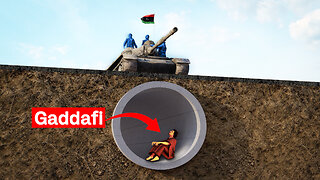Premium Only Content

#156 Printed Circuit Board (PCB)
A printed circuit board (PCB) is a fundamental component in most electronic devices and serves as a platform for connecting various electronic components together. It provides a compact and organized way to interconnect and support components like integrated circuits (ICs), resistors, capacitors, and other electronic parts. Here are some key aspects of printed circuit boards:
Base Material: PCBs are typically made from a non-conductive substrate material, which is usually fiberglass-reinforced epoxy or other composite materials. This base material provides mechanical support for the board.
Copper Layer: PCBs have one or more layers of copper foil bonded to the substrate. These copper layers are etched to create conductive pathways or traces that connect the electronic components on the board. The copper traces serve as the electrical connections between different parts of the circuit.
Components: Electronic components are mounted on the PCB using various methods, such as surface-mount technology (SMT) or through-hole technology (THT). SMT components are soldered directly onto the PCB's surface, while THT components have wire leads that pass through holes in the board and are soldered on the opposite side.
Traces: Copper traces on a PCB can vary in width and thickness, depending on the current they need to carry and the signals they need to transmit. Traces are carefully designed to minimize interference and maintain signal integrity.
Silkscreen: PCBs often have a silkscreen layer on top that includes printed text, symbols, and markings to help identify components and provide assembly and usage instructions.
Solder Mask: A solder mask layer is applied over the copper traces to insulate them and prevent unintended electrical connections. It is typically green, but other colors like blue, black, and red are also used.
Vias: Vias are small holes in the PCB that allow signals or power to pass between different layers of the board. They are typically plated with copper to ensure conductivity between layers.
Pads: Component pads are areas on the PCB where electronic components are soldered. These pads are usually circular or rectangular and are connected to the copper traces.
PCBs come in various types, including single-sided (with components on one side), double-sided (with components on both sides), and multi-layer (with multiple copper layers and insulating layers sandwiched together). The choice of PCB type depends on the complexity of the circuit and the specific requirements of the electronic device.
PCBs are designed using specialized software, and the manufacturing process involves etching the copper layers, drilling holes, applying solder mask and silkscreen layers, and assembling components. High-quality PCB manufacturing is essential for reliable and efficient electronic devices.
www.antharas.co.uk/ companies website or top book distributors!
#BusinessStrategy
#Entrepreneurship
#Leadership
#Management
#Marketing
#Finance
#Startups
#Innovation
#Sales
#SmallBusiness
#CorporateCulture
#Productivity
#SelfDevelopment
#SuccessStories
#PersonalBranding
#Networking
#Negotiation
#BusinessEthics
#TimeManagement
#GrowthStrategies
#MarketAnalysis
#BusinessPlanning
#FinancialManagement
#HumanResources
#CustomerExperience
#DigitalTransformation
#Ecommerce
#SocialMediaMarketing
#BusinessCommunication
#ChangeManagement
-
 8:44
8:44
AV
1 year ago#1142 Press release - Guide to innovationin the NHS
10 -
 LIVE
LIVE
BEK TV
2 days agoTrent Loos in the Morning - 8/25/2025
7,466 watching -
 LIVE
LIVE
The Bubba Army
2 days agoShould RaJa Jackson Be Arrested? - Bubba the Love Sponge® Show | 8/25/25
4,786 watching -
 LIVE
LIVE
FyrBorne
12 hours ago🔴Warzone M&K Sniping: Builds So Strong They Think I'm Hacking
413 watching -
 4:23
4:23
Blackstone Griddles
15 hours agoEasy Salmon Dinner on the Blackstone Griddle
19.4K1 -
 8:10
8:10
WhaddoYouMeme
1 day ago $0.02 earnedChristians, Before You See “Testament”, Watch this!
2.34K3 -
 8:42
8:42
Freedom Frontline
13 hours agoDurbin’s Trump Smear Video Just HUMILIATED Him in the Senate
3.62K -
 10:56
10:56
ariellescarcella
11 hours agoThe Shocking Divide Among College Voters Sparks Worry For America
2.66K5 -
 13:09
13:09
Forrest Galante
10 hours agoWildlife Expert Reacts To Deadly Australian Animal TikToks
47K4 -
 12:08
12:08
Zoufry
2 days agoThe Mystery of Gaddafi's Final 24 Hours
8.67K11